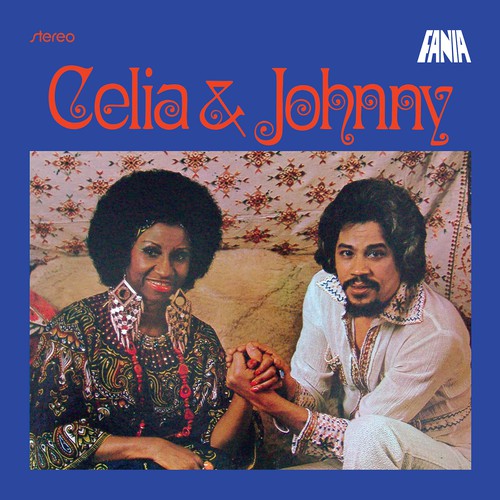
In her autobiography, she remembered Pacheco telling her: “Whites have their labels, blacks have Motown, and with Fania, we Latinos will have ours too, with our salsa label.” From that moment on, she called him “my dear brother.” Before the recordings, the first thing that united the singer and flautist were the conversations about music, and the reflection of what the word “salsa” meant in the Latin imagination. Meanwhile, in 1963, Pacheco joined the American businessman Jerry Masucci in partnership to create a new label called Fania Records.Ĭelia remembered having seen Pacheco for the first time in 1969, after a concert by Sonora Matancera at the Apollo. The musician and the singer were chasing each other, without knowing it.Ĭelia continued working on recordings with the Sonora Matancera until 1965, and began a fruitful working relationship with the orchestra of the King of Timbal, Tito Puente, as a star of the Tico Records label. Celia Cruz would arrive at that same stage, two years later. The success of “Charanga!” that first solo recording by Pacheco, with 100,000 units sold a few weeks after its release, also led him to become the first Latin musician to play at Harlem’s famed Apollo Theater in 1962.

He had already made a name for himself throughout the 1950s before making his first solo production, in the Big Apple’s Latin music scene under the name of Johnny Pacheco, alongside pianist Charlie Palmieri, with whom he played in the band Charanga Duboney.

That same year, a young Dominican percussionist and flautist based in New York named Juan Zacarías Pacheco Knipping (Santiago de los Caballeros, Dominican Republic, 1935), launched his first solo production in the orchestral charanga format (violins, flute, conga, piano, and double bass), with the voice of another former member of the Sonora Matancera, Elliot Romero, for the Alegre record label. “As I was the only woman in the Fania group, I was crowned Queen of Salsa,” she recalled in her autobiography, written in collaboration with Ana Cristina Reymundo. It would not be long before she also became the undeposable monarch of the musical genre. (“Your voice, a whisper of palms, tenderness of a breeze, / your voice, the trill of mockingbirds in the bower …”)Īfter her departure from Cuba to Mexico in July of 1960, Úrsula Hilaria Celia de la Caridad de la Santísima Trinidad Cruz Alfonso was already the “Guarachera of Cuba,” a title given to her for her appropriation of the festive and sweeping “guaracha” style, not only in her singing, but also in her dress, dance and attitude. “Tu voz, que es susurro de palmas, ternura de brisa, / tu voz, que es trinar de sinsontes en la enramada…” Perhaps there is no better description for her art than that offered in one of the greatest hits of her repertoire with the Sonora Matancera, Ramón Cabrera’s bolero “Tu Voz”: With this orchestra, originally from the Cuban city of Matanzas, the singer planted songs that today continue to be universal hits: “Burundanga,” “El Yerbero Moderno,” “Dile Que por Mí No Tema,” “La Sopa en Botella,” “Melao de Caña,” and “Juancito Trucupey,” among others.Ī perfect mix of sweetness and character, unbeatable in the art of montuno (the improvisation between chorus and chorus, characteristic of salsa) and owner of a unique and inimitable technique that made her singing a tool, both temperamental and volatile, the voice of Celia Cruz is still impossible to classify. Celia was the most acclaimed female member of a large group of unforgettable singers, which included Bienvenido Granda, Celio González, Alberto Beltrán, Nelson Pinedo, and Daniel Santos.

Rogelio is, of course, Rogelio Martínez, Cuban tres player and director of the most important and successful orchestra the island has seen: Sonora Matancera. Those are the words written in Mi Vida (My Life), the autobiography of Cuban singer Celia Cruz (Havana, Cuba, 1925 - Fort Lee, New Jersey, 2003). I never knew exactly how Rogelio did it to get us all the exit permits, but at that moment he was the only one who knew that after that trip we would never go back to Cuba.” Everything was ready except the exit permits that the government had imposed, and because so many artists and important people were leaving, that process was becoming increasingly complicated. “Rogelio did the paperwork so that Sonora could leave Cuba.


 0 kommentar(er)
0 kommentar(er)
